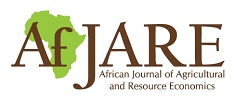Influence of proximity to and type of foraging habitat on value of insect pollination in the tropics, with applications to Kenya
Richard Mulwa, Juha Siikamaki, Michael Ndwiga, & Jessica Alvsilver
Abstract
Insect pollination improves the yield of most crop species and contributes to one-third of global crop production. The importance of this ecosystem service in improving agricultural production has largely been overlooked, however, in favour of practices that improve soil conditions such as fertiliser use and supplementary irrigation. Using economic modelling, this study estimates the value of insect pollination under different land-use types in Kenya. Our model assumes that a combination of land-use type and the foraging distance of insect pollinators influences the intensity of pollination and the value of agricultural output. To demonstrate the hypothesised relationships, areas under different land-use types, e.g. forest, grassland and cropland, and their distances from households were used as proxies for insect pollination. Concentric buffer zones representing foraging distances of pollinators from the land-use types were drawn at 250 m, 500 m, 1 000 m, 2 000 m and 3 000 m from the farms, and areas under each land use in the buffer zones were estimated for the years 2004, 2007 and 2010. Using the random-effects model and an output distance-function stochastic frontier model, the land-use areas, other factors of production and climate variables were regressed on the value of agricultural output in each buffer zone to determine their contribution to agricultural output resulting from insect pollination. The results indicate higher crop productivity on farms bordering forests and grasslands. This implies that insect pollinators are important for crop production, and increasing the number of pollinator habitats closer to the farms will increase food production in the tropics.
